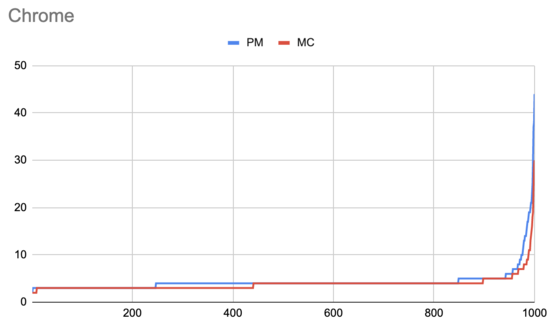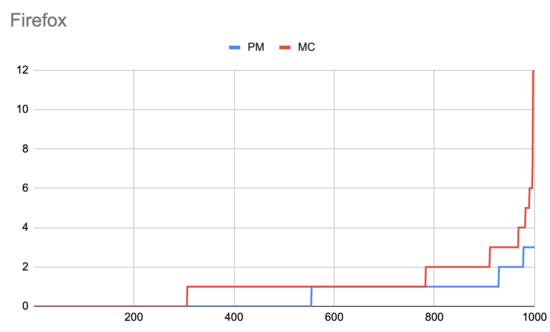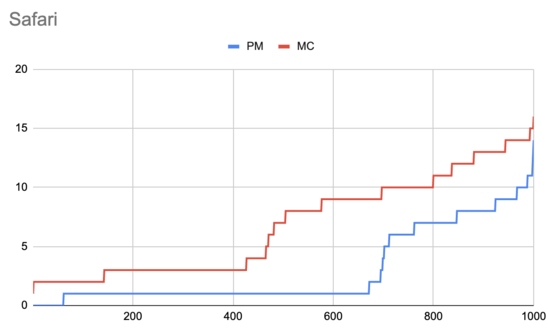The
Channel
Messaging API gives you a way to pass information asynchronously
between different origins on the web, such as cross-origin iframes.
Traditionally you would use
window.postMessage(), but the
a
MessageChannel has the advantage of being clearer, only
requiring validating origins on setup, and
handling
delegation better. Reading
this
2016 post, however, I was worried that it might have enough
overhead that
postMessage made more sense in
performance-sensitive contexts. Benchmark time!
I made a test page which alternates
between loading trycontra.com/test/messageChannelResponse.html
and trycontra.com/test/postMessageResponse.html.
I'm using two different domains so that I can test cross-origin
performance. First it loads messageChannelResponse in an
iframe, waits for it to load, and then times how long it
takes to pass in a MessagePort and receive a response on
it. Then it does the same basic operation
postMessageResponse with plain postMessage.
This is a worst-case for MessageChannel, since I stand up
the while channel only to use it a single time.
I ran 1,000 iterations, interleaved, on Chrome (80.0), Firefox (74.0), and Safari (13.1). All of these were on my 2017 MacBook Pro. Here are all the runs, sorted from fastest to slowest [1]:
In Chrome, MessageChannel is a bit faster, while in
Firefox and especially Safari it's slower. Additionally, Firefox runs
it faster than Safari, which runs it faster than Chrome. Safari also
has more consistent performance than Chrome, with a flatter
distribution. Firefox is in between, with a flat distribution for
postMessage but a few slow calls in the tail for
MessageChannel. If you're writing something where ~7ms/call
in Safari is an issue then it might be worth sticking to
postMessage, otherwise MessageChannel seems
fine.
[1] I find this kind of "sideways CDF" a really useful visualization
tool, and possibly the chart I make most often.


